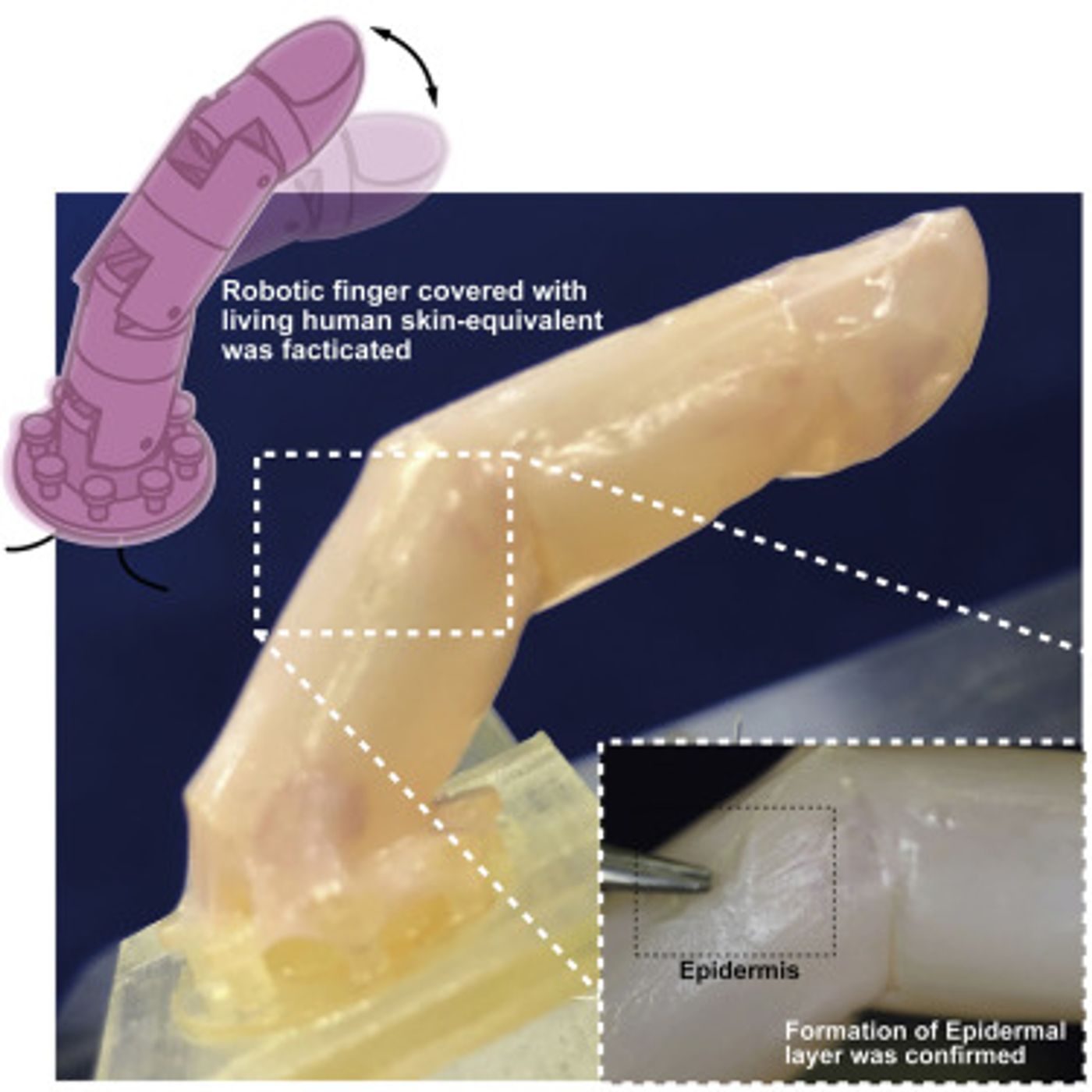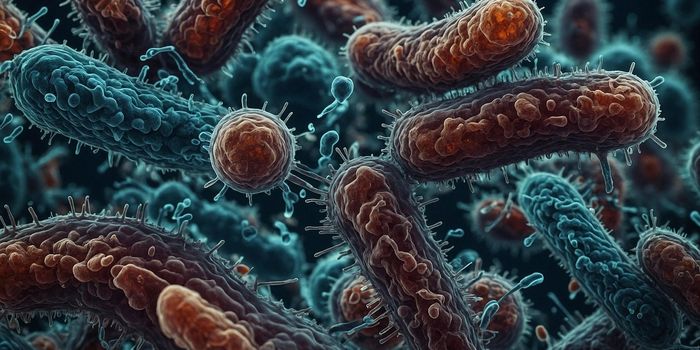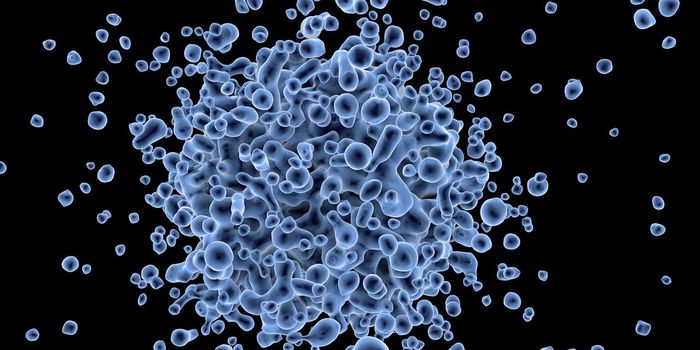Self-Healing, Synthetic Skin is Grown Directly on a Robotic Finger
With robotics and tissue culture skills, scientists have engineered a type of synthetic skin tissue that they successfully grew on a robot finger. The organic tissue contains live cells that support a layer of organic material that grows on top, which is strong, and can be formed into different shapes. The synthetic skin is soft, and it can even heal itself. The researchers are hopeful that this work could be applied in a variety of ways, and they are planning to add different types of cells to the synthetic tissue in the future. It may be possible to create synthetic tissue that is not only alive, but can sense things about its environment, like our own skin does. The work has been reported in the journal Matter.
Previous research by the University of Tokyo scientists behind this work is highlighted in the video at the bottom of this article. Professor Shoji Takeuchi is a biohybrid robot expert and pioneer, and has been working at the intersection of robotics and bioengineering. This field includes things like artificial muscles, lab-grown meat, synthetic receptors, for example.
Takeuchi is interested in improving medical research models that are used to study and improve the treatment of deep wounds and burns. The work could also advance manufacturing in many ways.
“We have created a working robotic finger that articulates just as ours does, and is covered by a kind of artificial skin that can heal itself,” said Takeuchi. This skin model is complex, noted Takeuchi, and is composed of a three-dimensional matrix that grows directly on the finger itself. The researchers don't have to grow it separately and then fit for attachment onto a device. So, this approach creates a covering that is more complete and strongly anchored too, Takeuchi added.
While some three-dimensional skin models have already been created for used for research and development on cosmetics and drugs, this is the first time a synthetic, live tissue has been grown on a working robot.
The synthetic skin is composed of a collagen matrix called a hydrogel. Several different kinds of skin cells, like fibroblasts and keratinocytes, grow inside that hydrogel. A structure was engineered especially for anchoring the matrix that was created.
“Our creation is not only soft like real skin but can repair itself if cut or damaged in some way. So we imagine it could be useful in industries where in situ repairability is important as are humanlike qualities, such as dexterity and a light touch,” said Takeuchi. “In the future, we will develop more advanced versions by reproducing some of the organs found in skin, such as sensory cells, hair follicles and sweat glands. Also, we would like to try to coat larger structures.”
Sources: University of Tokyo, Matter









